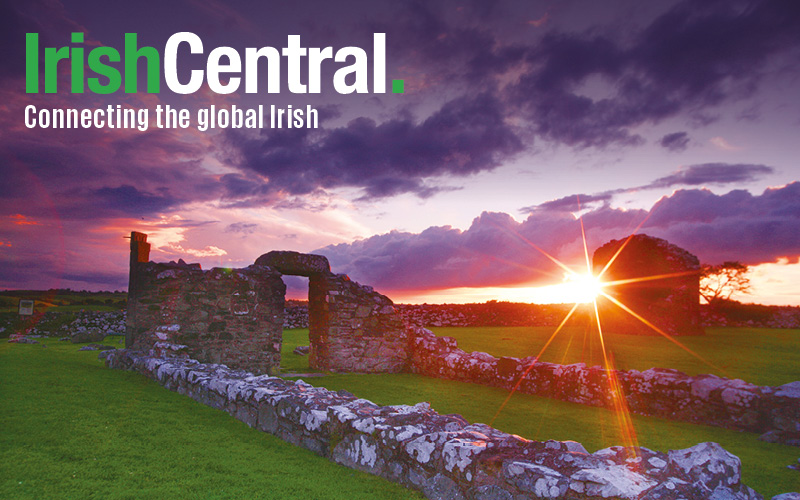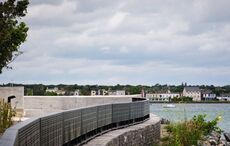Original article here - Irish insulted in major Washington museum exhibit claims scholar
The two curators of the Washington exhibit on Renaissance Ireland, which has been slammed for portraying the British as benign invaders by a leading Irish scholar, have defended their work.
Thomas Herron and Brendan Kane claim the letter criticising them by Irish academic Coilin Owens unfairly caricatures their work.
“As co-curators of the exhibit "Nobility and Newcomers in Renaissance Ireland," which has recently opened at the Folger Shakespeare Library, we are disappointed to find such an inaccurate and incomplete account of the exhibit as offered in your article. We would have appreciated being contacted so as to answer some of the charges against our exhibit before your article went into print.
Read More Irish news here
“For example, your article was based (mainly) on the testimony of Professor Coilin Owens, who states erroneously that "Purporting to represent Anglo-Irish relations, cultural and political, between 1580 and 1700, [the exhibit's] major claim is that the period was not marked by conflict but by 'cooperation.'"
“This is simply not true. In both the exhibit and the accompanying catalog, we clearly highlight war (such as the Nine Years' War), rebellion (such as the Kildare and Desmond rebellions) and colonization (such as the Munster and Ulster Plantations, and Cromwell's transplantations) as major (indeed traumatic) factors in the history of the period, which for the purposes of the exhibit encompasses roughly the years 1450-1660 (and not "1580-1700" as reported by Owens). We clearly mention conflict in the opening panel of the exhibit (and in the opening to the catalog) and highlight it throughout the exhibit.
Original article here - Irish insulted in major Washington museum exhibit claims scholar
“For example, when we discuss the Munster Plantation (begun in the 1580s) and writers associated with it, we include discussion of the warfare against the earl of Desmond (who, it should be pointed out, identified himself as Old English, not Irish) that preceded the plantation (cf. Case 5). We also present a facsimile of the celebratory bardic account, in Irish, of the destruction of the plantation by the Maguire, in 1598 (cf. Case 6).
“One strongpoint of this exhibit is its extended and careful presentation of Irish-language materials, some of them extremely rare (such as the Book of the O'Byrnes on loan from Harvard), thus giving a clear voice to the Gaelic Irish, many of whom (but not all of whom) suffered from events in the period. (Co-curator Kane is expert in the Irish language and history of the period.)
“The exhibit did not cover the period of the penal laws nor the Famine, and it is a disservice to fault us for ignoring later events. Rather, the exhibit covered a period when there was much opportunity for Irish and English actors on the scene, amid all the turmoil, and it was our desire to bring some of those stories to a wider audience, and thus to enrich our understanding of Ireland in the renaissance.
“To deny the trauma of early-modern Irish-English relations is gross error and one that we have not committed. Professor Owens does your readers, and us, a service by making sure that we don't forget that trauma. But it is also erroneous to overlook the fact that this history was more than a drawn battle between "English" and "Irish" with the latter always the loser.
“To try to tell part of that story -- in conjunction with, not in opposition to, the story of state terror and dispossession-- should not lead to our being compared to Holocaust deniers. The early modern Irish nobility were powerful, capable, and even hopeful men and women who wished to see themselves prosper on an international stage. Witness the painting, by Van Dyck, of the daughter of the O'Brien earl of Thomond, now hanging in the Baltimore Museum of Art and reproduced in our exhibit (and on the cover of our catalog). That few of the Irish nobility did so after Cromwell (a period not covered in depth by our exhibit) does not mean that history prior to Cromwell does not exist. Indeed, we end our exhibit with mention of the harp as a symbol of Irish movements for sovereignty and with (brief) discussion of the savagery of the Cromwellian transplantations.
“We encourage your readers to visit the exhibition, to read the catalog and to judge for themselves. Our interpretation will not be everyone's, but that is the purpose of public engagement: to spark discussion. We are disappointed to be so caricatured.”
Original article here - Irish insulted in major Washington museum exhibit claims scholar




Comments